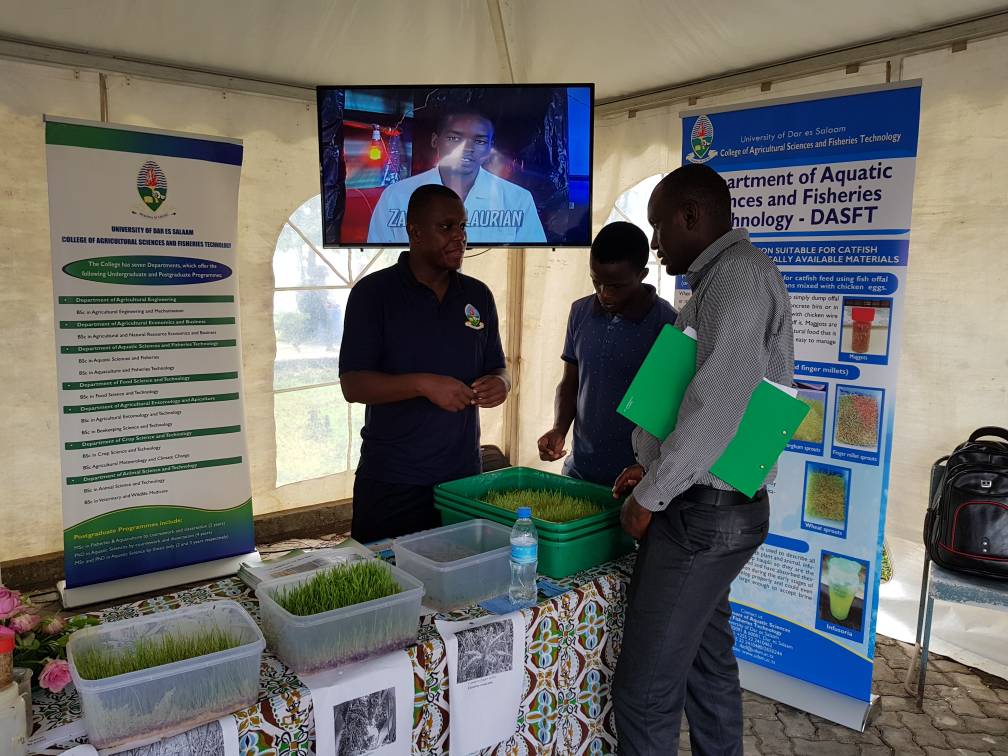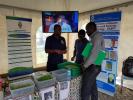This is the 12th case study from SUEUAA (Strengthening Urban Engagement in Universities in Asia and Africa), written by Mpoki Mwaikokesya, School of Education, University of Dar-es-Salaam. SUEUAA is interested in how Universities in the Global South can contribute to solving geographical, economic, and social issues in their cities.
Since 2015, the university of Dar-es-Salam had been running the annual campus-wide research exhibitions events to the public as one of the ways of improving awareness of its research activities and research outputs and address societal challenges, and some of that work is described in this case.
Background
Globally, universities are committed to demonstrate their vital role in contributing to society in terms of education and training, the production and dissemination of new knowledge, and the sustained engagement with societal stakeholders in addressing the national and international challenges (Akker & Spaapen, 2017). Historically, Tanzania, just like other African nations after independence, struggled to establish at least one national university so that it could play a pioneering role in addressing problems of poverty, social disorganisation, low production, unemployment, hunger, illiteracy, and diseases - that is, the problems of underdevelopment which appeared to be common in the African continent (Mosha 1986). From the above arguments, it is clear that the African universities engagement role stems from the reality that such institutions are trusted as critical partners in development that can contribute in addressing political, social, economic, and technological problems. It is for these reasons that the Tanzanian government had been investing in higher education.
However, given the ongoing urbanisation and population growth, even though universities have a strategic role to play in national development, they are equally expected to play a critical role in addressing challenges facing cities and towns. In Tanzania for the urbanisation process has undergone a rapid growth in the past few decades and the rate of urbanisation ranges between 4.7 to 10.8 percent. On the other hand, regional levels of urbanisation in Tanzania differ from one region to another. The highest level of urbanisation is however experienced in Dar es Salaam which is 100% metropolitan (National Bureau of Statistics - NBS, 2015). A recent National Geographic report ranks Dar es Salaam as Africa’s fifth most populous city. The report indicates further that the city is projected to grow from six million people today to 13.4 million by 2035, crossing the “megacity” threshold of 10 million people sometime before 2030.
Dar-es-Salaam just like world’s other urbanising cities is facing problems that include a lack of jobs, homelessness and expanding squatter settlements, inadequate services and infrastructure, poor health and educational services, food security, migration crises and high levels of pollution. In such an increasingly urban world, such cities are further faced with major resilience challenges such as poverty reduction, environmental sustainability, and social inclusion. Such challenges cannot be addressed by a single institution or organization on its own. Instead such challenges require the amalgamation and sharing of knowledge across institutions, across disciplines and across stakeholders.
In literature, the role of universities in addressing societal challenges have been highly emphasised. Sawyerr (2004, p.217) for instance notes the crucial role played by African universities in tackling challenges.
In Tanzania, the government considers universities as potential vehicles for rapid development (URT, 1999). The role of universities in development has also been highlighted in the 2000 – 2025 development vision statement which clearly states the need to amass knowledge so that the society can fight common enemies namely, poverty, diseases and ignorance and foster economic growth. Furthermore the Tanzanian development vision 2000 - 2025 envisages Tanzania becoming “a nation with high level education at all levels; a nation which produces the quantity and quality of educated people sufficiently equipped with the requisite knowledge and skills to solve the society’s problems; meet the challenges of development and attain competitiveness at regional and global level.”
Furthermore as indicated in the SUEUAA Tanzanian country profile, the analysis of individual university's visions and missions suggests that most in the region view themselves as having a social responsibility. For instance, the University of Dar-es-Salaam (UDSM), which is the oldest public university in the country, established in 1970 and home to 29,125 students (UDSM, 2017), clearly identifies itself as having a social responsibility to perform community services as mandated by its 1970 Act (Part II), Section 4 (a-g), which identifies one of the university functions as: “to create a sense of public responsibility in the educated and promote respect for learning and pursuit of truth” (See also, UDSM 2011). Similarly, the UDSM mission statement has since then has encompassed a wider scope for those functions whereby the role of the university has been identified as “the unrelenting pursuit of scholarly and strategic research, education, training and public service directed at the attainment of equitable and sustainable socio-economic development of Tanzania and the rest of Africa.”
Additionally, the vision of the university is “to become a reputable world-class university that is responsive to national, regional and global development needs through engagement in dynamic knowledge creation and application.” Between 2006-07 and 2010-11, the guiding theme of the university was: “Enhanced quality outputs in teaching, research and public service”. It is further argued that ‘the university has a societal orientation, and one of the three interrelated core functions of the UDSM is “to provide public services to the community that address the country’s existing and future social problems, through consultancy and outreach programmes”
University Research exhibitions at UDSM as a vehicle for University engagement
The annual campus-wide research exhibitions events are organised at two levels; namely unit (Colleges/Schools/Institutes) level, and university level.
The university research exhibitions are furthermore aimed at presenting best research outputs from different university units to society. Activities also include the identification of outstanding research contributors to society. The exhibitions, in addition, serve as a means for researchers to contribute and communicate their findings directly to consumers. The activities in these exhibitions also include presentations of research projects on numerous topics relevant to various sectors in the city such as new technology, agro-processing innovations, entrepreneurship, ICTs, social sciences research and research in humanities.
The events further include projects on such themes as energy, agriculture, environment, health, information technology, education, resource assessment, archeology, mineral resources and mining, and oil and gas.
During these exhibitions, researchers get a chance to showcase their research-based solutions and contributions to different challenges in society and show their research outputs to the general public and to business people in the city. The research exhibitions are also conducted in order to increase the visibility of outputs from UDSM students and academic staff, so as to contribute in addressing the city and national problems challenges.

Through the research exhibitions, units and researchers had an opportunity to display materials such as policy briefs, journals, conference papers and proceedings with the general purpose of making sure that research outputs contribute to the well-being of society and help in ensuring the general quality of life of people is improved.
In conclusion, it seems that there is a need for universities to find innovative ways for reaching the public with research outputs. The research week exhibitions serve as one of the effective ways of reaching out to communities and contribute to addressing societal challenges. Such approaches are not only good ways of presenting research and information-based solutions but also a useful way of strengthening the partnership between universities and the public and private organisations locally and globally. The research exhibitions can furthermore provide a good platform for universities to maximize their contribution and fulfillment of their development promises to society. It is crucial however that more innovative ways are explored so as to reach even wider grass-roots audiences.
References
Akker W. & Spaapen, J. (2017). Productive interactions: societal impact of academic research in the knowledge society. LERU position paper March 2017. Retrieved from https://www.leru.org/files/Productive-Interactions-Societal-Impact-of-Academic-Research-in-the-Knowledge-Society-Full-paper.pdf
Mhache, P. (2012) Dar es Salaam City and Challenges in Solid Waste Management. The Case of Manzese and Sinza Wards in Dar es Salaam Emmanuel, Huria: Journal of the Open University of Tanzania, 10(1) 78- 91
Mosha, H. (1986). The Role of African Universities in National Development: A Critical Analysis, Comparative Education, 22(2) 93-109.
National Bureau of Statistics (2015). Migration and Urbanization Monograph Dar-es-Salaam: United Republic of Tanzania
National Geographic (2019)This Tanzanian city may soon be one of the world’s most populous. Is it ready? Retrieved from https://www.nationalgeographic.com/environment/2019/04/tanzanian-city-may-soon-be-one-of-the-worlds-most-populous/
Sawyerr, A. (2004). African Universities and the Challenge of Research Capacity Development, Journal of Higher Education in Africa, Special Issue: African Higher Education: Implications for Development 2(1), 213-242
UDSM (2017). Facts and Figures 2011/12 – 2016/17, Directorate of Planning and Development. Dar-es--Salaam: UDSM.
UDSM. (2011). Report of the Visit of Vice Chancellor's Panel to the UDSM. Dar-es--Salaam: UDSM.
URT. (1998). Development Vision 2025. Dar-es-Salaam: Presidents Office,Planning Commission Retrieved from http://www.tanzania.go.tz/vision.htm.

